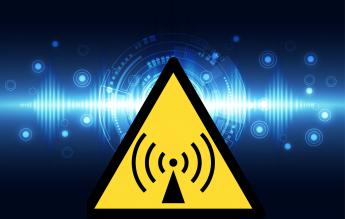
Emitech Group offers the services of the ECE R.100 Rev.3 / UNR100 (Uniform provisions concerning the approval of vehicles with regard to specific requirements for electric powertrains) which replaces, as of September 1, 2023, the regulation ECE R.100 Rev.2 / UNR100 (Uniform provisions concerning the approval of battery electric vehicles with regard to specific requirements applicable to the construction, functional safety, and hydrogen emissions).
This regulation is covered by the GTR N°20 also known as EVS-GTR.
This third edition implements significant changes in the approval process applicable to motor vehicles and rechargeable electric energy storage systems (REESS or RESS - Rechargeable Energy Storage Systems).
The regulation provides a separate approval path for REESS (most often, rechargeable batteries) and introduces a number of tests exclusively applicable to these systems.
With these test requirements coming into force in July 2014 and becoming mandatory in July 2016, the responsibility for obtaining approval for a rechargeable battery can also be transferred to the RESS manufacturer.
In this reference document, 10 different types of tests in its Annex 9 (9A to 9J) and the conditions under which they must be performed are outlined. (compared to 9 in revision 2 defined in its Annex 8 from 8A to 8I)
Emitech Group handles all of these tests. The diversity of our equipment fleet also allows us to use the test method with the most appropriate reception specifications for the characteristics of the cells and batteries entrusted to us.
We thus offer you costs corresponding to the resources committed and in compliance with your deadline constraints
Chapter 6 (Part II: Requirements of a Rechargeable Electrical Energy Storage System (REESS) with regard to its safety) specifies the provisions applicable to batteries (REESS) and refers in its Annex 9 to the procedures to follow.
Find the complete ECE R100.03
5 provisions are also applicable in terms of:
 The purpose of this test is to verify the safety performance of the REESS under a vibration environment which the REESS will likely experience during the normal operation of the vehicle.
The purpose of this test is to verify the safety performance of the REESS under a vibration environment which the REESS will likely experience during the normal operation of the vehicle.
This test shall be conducted either with the complete REESS or with REESS subsystem(s)
The Tested-Device shall be firmly secured to the platform of the vibration machine in such a manner as to ensure that the vibrations are directly transmitted to the Tested-Device.
The Tested-Device should be mounted with its original mounting points, if those exist in the Tested-Device, as mounted in the vehicle.
The test shall be conducted at an ambient temperature of 22 ± 5 °C;
At the beginning of the test, the SOC shall be adjusted according to the provisions described below, and all protective devices that affect the functions of the test device and on which the test results depend must be in operation.
The Tested-Device shall be subjected to a vibration having a sinusoidal waveform with a logarithmic sweep between 7 Hz and 50 Hz and back to 7 Hz traversed in 15 minutes. This cycle shall be repeated 12 times for a total of 3 hours in the vertical direction of the mounting orientation of the REESS as specified by the manufacturer.
The correlation between frequency and acceleration must be in accordance with the following data:
From 7 to 18 Hz: 10g
From 18 to 30 Hz: gradually reduced from 10 to 2
From 30 to 50 Hz: 2g
After the vibration test, a standard cycle as described in Appendix 1 of Annex 8 of R100 Rev3 must be performed, if this operation is not inhibited by the test system.
The test must end with a 1-hour observation period at ambient temperature.
See our vibration testing capabilities
In addition, our engineering offices can handle the design of test fixtures. This step is crucial for the successful completion of the tests.
The purpose of this test is to verify the resistance of the REESS to sudden changes in temperature. The REESS shall undergo a specified number of temperature cycles, which start at ambient temperature followed by high and low
temperature cycling. It simulates a rapid environmental temperature change which a REESS would likely experience during its life.
 The Tested-Device shall be stored for at least six hours at a test temperature equal to 60 ± 2 °C or higher if requested by the manufacturer, followed by storage for at least six hours at a test temperature equal to – 40 ± 2 °C or lower if requested by the manufacturer. The maximum time interval between test temperature extremes shall be 30 minutes.
The Tested-Device shall be stored for at least six hours at a test temperature equal to 60 ± 2 °C or higher if requested by the manufacturer, followed by storage for at least six hours at a test temperature equal to – 40 ± 2 °C or lower if requested by the manufacturer. The maximum time interval between test temperature extremes shall be 30 minutes.
This procedure shall be repeated until a minimum of 5 total cycles are completed, after which the Tested-Device shall be stored for 24 hours at an ambient temperature of 22 ± 5 °C.
After the storage for 24 hours, a standard cycle as in Annex 9, Appendix 1 shall be conducted, if not inhibited by the Tested-Device.
The test shall end with an observation period of 1 h at the ambient temperature conditions of the test environment.
The purpose of this test is to verify the safety performance of the REESS under inertial loads which may occur during a vehicle crash.
The Tested-Device shall be decelerated or accelerated in compliance with the acceleration corridors which are specified in the document depending on the vehicle category and after exchanges between the technical service and the manufacturer.
Our engineering offices can handle the design of test fixtures. This step is crucial for the successful completion of the tests.
The purpose of this test is to verify the safety performance of the REESS under contact loads which may occur during vehicle crash situation.
The Tested-Device shall be crushed between a resistance and a crush plate as described in Figure 1 with a force of at least 100 kN, but not exceeding 105 kN, unless otherwise specified in accordance with paragraph 6.4.2. of this Regulation, with an onset time less than 3 minutes and a hold time of at least 100 ms but not exceeding 10 s.
A higher crush force, a longer onset time, a longer hold time, or a combination of these, may be applied at the request of the manufacturer.
The application of the force shall be decided by the manufacturer having consideration to the direction of travel of the REESS relative to its installation in the vehicle. The application force being applied horizontally and perpendicular to the direction of travel of the REESS.
The test shall end with an observation period of 1 h at the ambient temperature conditions of the test environment.
The purpose of this test is to verify the resistance of the REESS, against exposure to fire from outside of the vehicle due to e.g. a fuel spill from a vehicle (either the vehicle itself or a nearby vehicle). This situation should leave the driver and passengers with enough time to evacuate.
The tested device is subjected to direct and indirect exposure to a flame produced by the combustion of a commercial fuel.
Access more information about our dedicated battery fire tests
The purpose of this test is to verify the performance of the short circuit protection to prevent the REESS from any further related severe events caused by short circuit current.
At the start of the test all relevant main contactors for charging and discharging shall be closed to represent the active driving possible mode as well as the mode to enable external charging. If this cannot be completed in a single test, then two or more tests shall be conducted.
For testing with a complete REESS or REESS subsystem(s), the positive and negative terminals of the Tested-Device shall be connected to each other to produce a short circuit. The connection used for this purpose shall have a
resistance not exceeding 5 mΩ.
For testing with a complete vehicle, the short circuit is applied through the breakout harness. The connection used for creating the short circuit (including the cabling) shall have a resistance not exceeding 5 mΩ.
The short circuit condition shall be continued until the protection function operation of the REESS terminate the short circuit current, or for at least 1 hour after the temperature measured on the casing of the Tested-Device has stabilised, such that the temperature gradient varies by a less than 4 °C through 2 hours.
The purpose of this test is to verify the performance of the overcharge protection to prevent the REESS from any further related severe events caused by a too high SOC.
For component tests, the charging procedure requires an external power source.
The REESS shall be charged by the external electricity supply equipment with the maximum charge current specified by the manufacturer. The charging shall be terminated when the vehicle's overcharge protection control terminates the REESS charge current. Where vehicle's overcharge protection control fails to operate, or if there is no such control, the charging shall be continued until the REESS temperature reaches 10 °C above its maximum operating temperature specified by the manufacturer. In the case where charge current is not terminated and where the REESS temperature remains less than 10 °C above the maximum operating temperature, vehicle operation shall be terminated 12 hours after the start of charging by external electricity supply equipment;
Immediately after the termination of charging, one standard cycle as described in Annex 9, Appendix 1 shall be conducted, if it is not prohibited by the vehicle, with vehicle operation on a chassis dynamometer for discharging and with external electricity supply equipment for charging.
The test shall end with an observation period of 1 hour at the ambient temperature conditions of the test environment.
The purpose of this test is to verify the performance of the over-discharge protection to prevent the REESS from any severe events caused by a too low SOC.
For component tests, the discharge procedure is carried out using an external setup (component test).
All relevant main contactors shall be closed. The external charge-discharge shall be connected to the main terminals of the Tested-Device;
A discharge shall be performed with a stable current within the normal operating range as specified by the manufacturer;
The discharging shall be continued until the Tested-Device (automatically) terminates REESS discharge current or the temperature of the Tested-Device is stabilized such that the temperature varies by a gradient of less than 4 °C through 2 hours. Where an automatic interrupt function fails to operate, or if there is no such function, then the discharging shall be continued until the Tested-Device is discharged to 25 per cent of its nominal voltage level;
Immediately after the termination of the discharging, one standard charge followed by a standard discharge as described in Annex 9, Appendix 1 shall be conducted if not inhibited by the Tested-Device.
The test shall end with an observation period of 1 hour at the ambient temperature conditions of the test environment.
The purpose of this test is to verify the performance of the protection measures of the REESS against internal overheating during the operation. In the case that no specific protection measures are necessary to prevent the REESS from reaching an unsafe state due to internal over-temperature, this safe operation must be demonstrated.
The test may be conducted with a complete REESS or with a complete vehicle.
The test procedure for a complete REESS test follows these steps:
At the beginning of the test, all protection devices which affect the function of the Tested-Device and are relevant to the outcome of the test shall be operational, except for any system deactivation.The Tested-Device shall be continuously charged and discharged by the external charge/discharge equipment with a current that will increase the temperature of cells as rapidly as possible within the range of normal operation as defined by the manufacturer until the end of the test.
Alternatively, the charge and discharge may be conducted by vehicle driving operations on chassis dynamometer where the driving operation shall be determined through consultation with the manufacturer.
The temperature of the chamber or oven shall be gradually increased, from 20 ± 10 °C or at higher temperature if requested by the manufacturer, until it reaches the temperature determined in accordance with paragraph below as applicable, and then maintained at a temperature that is equal to or higher than this, until the end of the test.
- Where the REESS is equipped with protective measures against internal overheating, the temperature shall be increased to the temperature defined by the manufacturer as being the operational temperature threshold for such
protective measures, to ensure that the temperature of the Tested-Device will increase as specified in paragraph 4.2. above.
- Where the REESS is not equipped with any specific measures against internal over-heating, the temperature shall be increased to the maximum operational temperature specified by the manufacturer.
- When the REESS does not have internal overheating protection, the temperature must be increased to reach the maximum operating value defined by the manufacturer.
The end of test: The test will end when one of the followings is observed:
- The Tested-Device inhibits and/or limits the charge and/or discharge to prevent the temperature increase;
- The temperature of the Tested-Device is stabilised, which means that the temperature varies by a gradient of less than 4 °C through 2 hours;
- Any failure of the acceptance criteria prescribed in paragraph 6.9.2.1. of the Regulation
The purpose of this test is to verify the performance of the overcurrent protection during DC external charging to prevent the REESS from any severe events caused by excessive levels of charge current as specified by the manufacturer.
For vehicles that can be charged using an external direct current source, the following procedure applies:
The DC charging vehicle inlet shall be used for connecting the external DC electricity supply equipment. The charge control communication of the external electricity supply equipment is altered or disabled to allow the overcurrent level determined through consultation with the manufacturer;
Charging of the REESS by the external DC electricity supply equipment shall be initiated to achieve the highest normal charge current specified by the manufacturer. The charge current is then increased over 5 seconds from the highest normal charge current to the overcurrent level determined in accordance with the standard.
Charging is then continued at this overcurrent level;
The charging shall be terminated when the functionality of the vehicle's overcurrent protection terminates the REESS charge current or the temperature of the REESS is stabilized such that the temperature varies by a gradient of less than 4 °C through 2 hours;
Immediately after the termination of charging, one standard cycle as described in Annex 9, Appendix 1 shall be conducted, if it is not prohibited by the vehicle.
The test shall end with an observation period of 1 hour at the ambient temperature conditions of the test environment.
Our services also cover other requirements besides those of Chapter 6.
When a REESS contains a flammable electrolyte, vehicle occupants must not be exposed to a hazardous environment due to thermal propagation triggered by an internal short circuit leading to a cell's thermal runaway.
We provide you with our expertise and deliver the test reports (applied procedure, test conditions, and results obtained) required for your conformity demonstration.
Revision 3 of ECE R100.3 stipulates that it is imperative to maintain a minimum duration of 5 minutes between the initiation of runaway (a battery thermal runaway phenomenon) and the appearance of the first flames or smoke. This measure is essential to ensure the safety of drivers and passengers, as well as to prevent any risk of fire or explosion related to battery overheating.
As part of the risk reduction analysis (Chapter 6.15.2.1), we offer additional tests aimed at preventing battery overheating or fire risks:
The aim is to determine hydrogen emissions during REESS charging operations for all electric road vehicles.
We offer to perform the test on the REESS.
The REESS must be in good mechanical condition and have undergone at least five standard cycles.
 The purpose of this test is to verify the safety performance of the REESS under a vibration environment which the REESS will likely experience during the normal operation of the vehicle.
The purpose of this test is to verify the safety performance of the REESS under a vibration environment which the REESS will likely experience during the normal operation of the vehicle.
The tested-device shall be firmly secured to the platform of the vibration machine in such a manner as to ensure that the vibrations are directly transmitted to the tested-device.
The tested-devices shall be subjected to a vibration having a sinusoidal waveform with a logarithmic sweep between 7 Hz and 50 Hz and back to 7 Hz traversed in 15 minutes. This cycle shall be repeated 12 times for a total of 3 hours.
See our vibration capabilities.
In addition, our design offices can take care of the design of the mounting parts. This step is essential for the good realization of the tests.
 The purpose of this test is to verify the resistance of the REESS to sudden changes in temperature. The REESS shall undergo a specified number of temperature cycles, which start at ambient temperature followed by high and low temperature cycling. It simulates a rapid environmental temperature change which a REESS would likely experience during its life.
The purpose of this test is to verify the resistance of the REESS to sudden changes in temperature. The REESS shall undergo a specified number of temperature cycles, which start at ambient temperature followed by high and low temperature cycling. It simulates a rapid environmental temperature change which a REESS would likely experience during its life.
The tested-device shall be stored for at least 6 hours at a test temperature equal to 60 ± 2 °C or higher if requested by the manufacturer, followed by storage for at least 6 hours at a test temperature equal to – 40 ± 2 °C or lower if requested by the manufacturer. The maximum time interval between test temperature extremes shall be 30 minutes. This procedure shall be repeated until a minimum of 5 total cycles are completed, after which the tested-device shall be stored for 24 hours at an ambient temperature of 20 ± 10 °C.
After the storage for 24 hours, a standard cycle as described in the appendix to Annex 8 shall be conducted, if not inhibited by the tested-device.
The test shall end with an observation period of 1 h at the ambient temperature conditions of the test environment.
The purpose of this test is to verify the safety performance of the REESS under inertial loads which may occur during a vehicle crash.
The purpose is to verify the safety performance of the battery (SRSEE) under inertial loads that may occur under vehicle crash conditions. The device under test is accelerated or decelerated to speeds specified in the tables accompanying the regulation, and the actual gravitational force is compared to the values specified in Appendix 8C.
Our design offices can take care of the design of the mounting parts. This step is essential for the good realization of the tests.
The purpose of this test is to verify the safety performance of the REESS under contact loads which may occur during vehicle crash situation.
The tested-device shall be crushed between a resistance and a crush plate with a force of at least 100 kN, but not exceeding 105 kN (unless otherwise specified), with an onset time less than 3 minutes and a hold time of at least 100 ms but not exceeding 10 s.
A higher crush force, a longer onset time, a longer hold time, or a combination of these, may be applied. The application of the force shall be determined by direction of travel of the REESS relative to its installation in the vehicle. The application force being applied horizontally and perpendicular to the direction of travel of the REESS.
The test shall end with an observation period of 1 h at the ambient temperature conditions of the test environment.
The purpose of this test is to verify the resistance of the REESS, against exposure to fire from outside of the vehicle due to e.g. a fuel spill from a vehicle (either the vehicle itself or a nearby vehicle). This situation should leave the driver and passengers with enough time to evacuate.
The device under test is subjected to direct and indirect exposure to a flame produced by the combustion of a commercial fuel.
The purpose of this test is to verify the performance of the short circuit protection. This functionality, if implemented, shall interrupt or limit the short circuit current to prevent the REESS from any further related severe events caused by short circuit current.
The device under test is intentionally shorted by connecting the positive and negative terminals of the device, using a connection with a specified resistance.The short circuit condition shall be continued until the operation of the REESS's protection function to interrupt or limit the short circuit current is confirmed, or for at least 1 hour after the temperature measured on the casing of the tested-device has stabilised.
The purpose of this test is to verify the performance of the overcharge protection.
The charging shall be continued until the tested-device (automatically) interrupts or limits the charging. Where an automatic interrupt function fails to operate, or if there is no such function the charging shall be continued until the tested-device is charged to twice of its rated charge capacity.
The purpose of this test is to verify the performance of the over-discharge protection. This functionality, if implemented, shall interrupt or limit the discharge current to prevent the REESS from any severe events caused by a too low SOC as specified by the manufacturer.
The device under test is discharged until it interrupts or limits the discharge, or when the device is discharged to 25 per cent of its nominal voltage level.
The purpose of this test is to verify the performance of the protection measures of the REESS against internal overheating during the operation, even under the failure of the cooling function if applicable. In the case that no specific protection measures are necessary to prevent the REESS from reaching an unsafe state due to internal over-temperature, this safe operation must be demonstrated.
The device under test is repeatedly charged and discharged with a constant current to raise the temperature of the cells. The device is then placed in a convection oven or climate chamber, and the temperature of the oven or chamber is gradually increased to a predetermined level.
As from the official date of entry into force of the 03 series of amendments, no Contracting Party applying this Regulation shall refuse to grant or refuse to accept type approvals under this Regulation as amended by the 03 series of amendments.
As from 1 September 2023, Contracting Parties applying this Regulation shall not be obliged to accept type approvals to the preceding series of amendments, first issued after 1 September 2023.
Until 1 September 2025, Contracting Parties applying this Regulation shall accept type approvals to the preceding series of amendments, first issued before 1 September 2023.
As from 1 September 2025, Contracting Parties applying this Regulation shall not be obliged to accept type approvals issued to the preceding series of amendments to this Regulation.
Contracting Parties applying this Regulation shall not refuse to grant type approvals according to any preceding series of amendments to this Regulation or extensions thereof.
Notwithstanding the transitional provisions above, Contracting Parties who start to apply this Regulation after the date of entry into force of the most recent series of amendments are not obliged to accept type approvals which were granted in accordance with any of the preceding series of amendments to this Regulation.
The main updates to the UN ECE R100.03 standard are as follows:
Updated requirements for vehicle electrical safety in accordance with UN ECE R100.03, Part I.
Updated requirements for REESS safety in accordance with UN ECE R100.03 Part II
The United Nations Economic Commission for Europe (UNECE) is one of the five regional commissions of the United Nations Economic and Social Council (ECOSOC). It consists of 56 member states: European countries, as well as the United States, Canada, Israel, Turkey, and former Soviet republics in the Caucasus and Central Asia.
The objective of this commission is to harmonize the type-approval procedures among the member states.
Three UN agreements, adopted in 1958, 1997, and 1998, provide the legal framework for the WP.29 to establish regulatory instruments concerning motor vehicles and their equipment.
The WP.29 has created six permanent GR (Global Regulation) working groups responsible for examining specialized tasks and composed of people with specific expertise, such as the GRSP for passive safety (which updates the GTR No. 20) and the GRPE for pollution and energy (which leads the GTR No. 15).
Monitoring the GTR N°20 allows for an overview of the progress of this objective: ECE/TRANS/180/Add.20 (and its annex ECE/TRANS/180/Add.20/Appendix 1).
The category L includes motorcycles and mopeds, as well as off-road vehicles (quads) and other small motor vehicles with three or four wheels.
For the batteries of these vehicles, the same types of tests apply with different specifications and some additional tests.
They are specified in the ECE R136 regulation in Annexes 8 and 9:













Emitech Group - Legal information